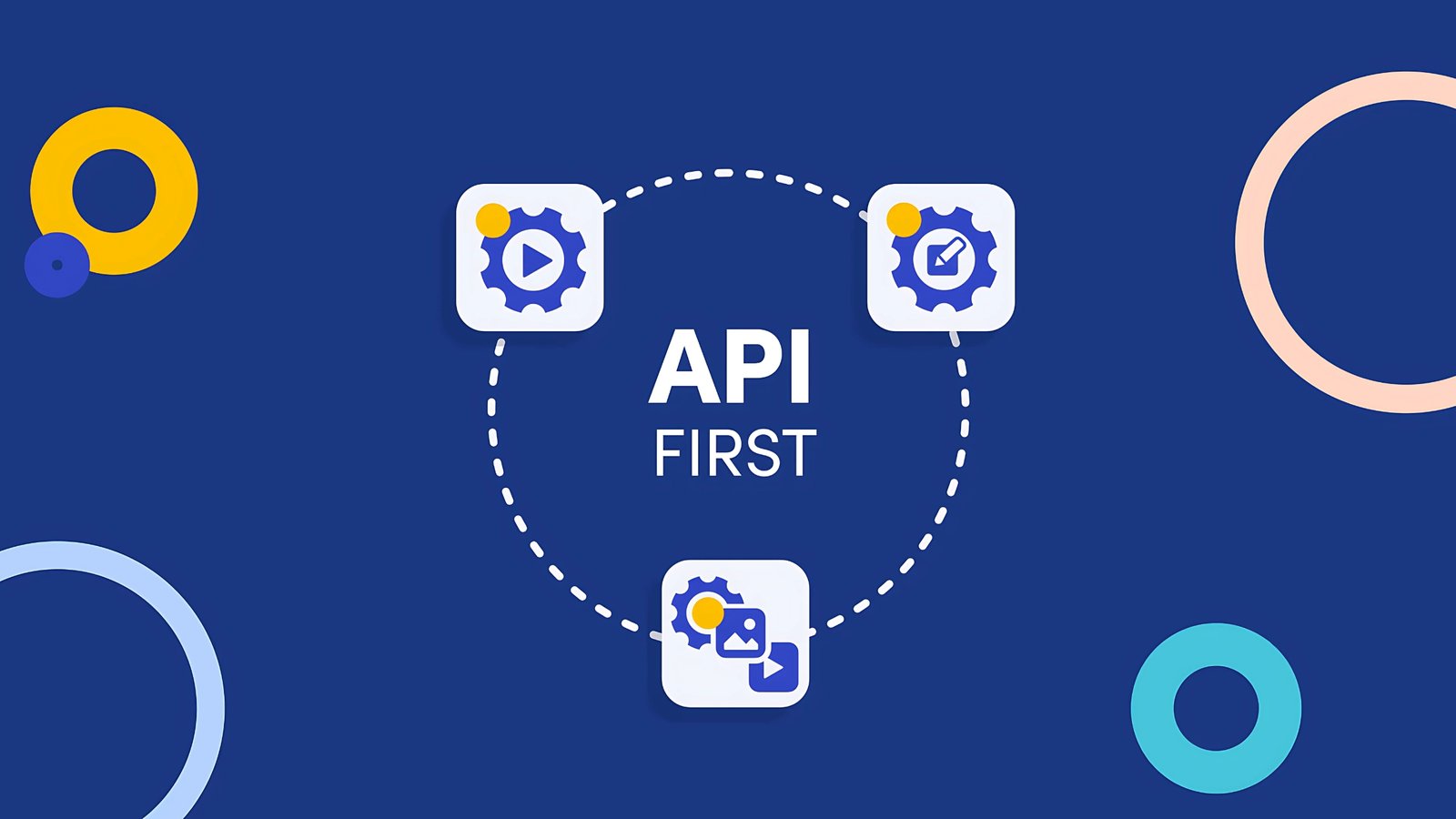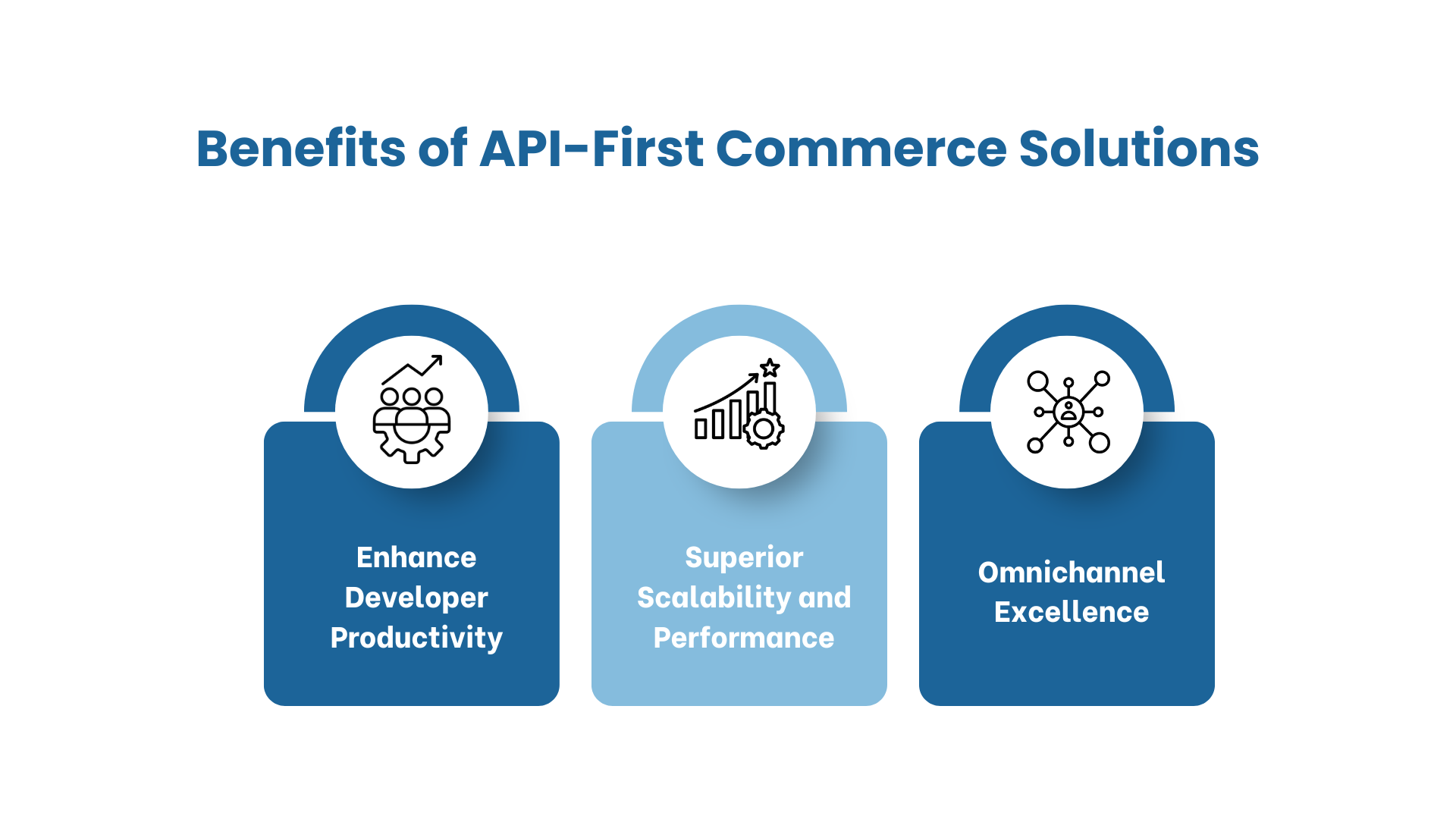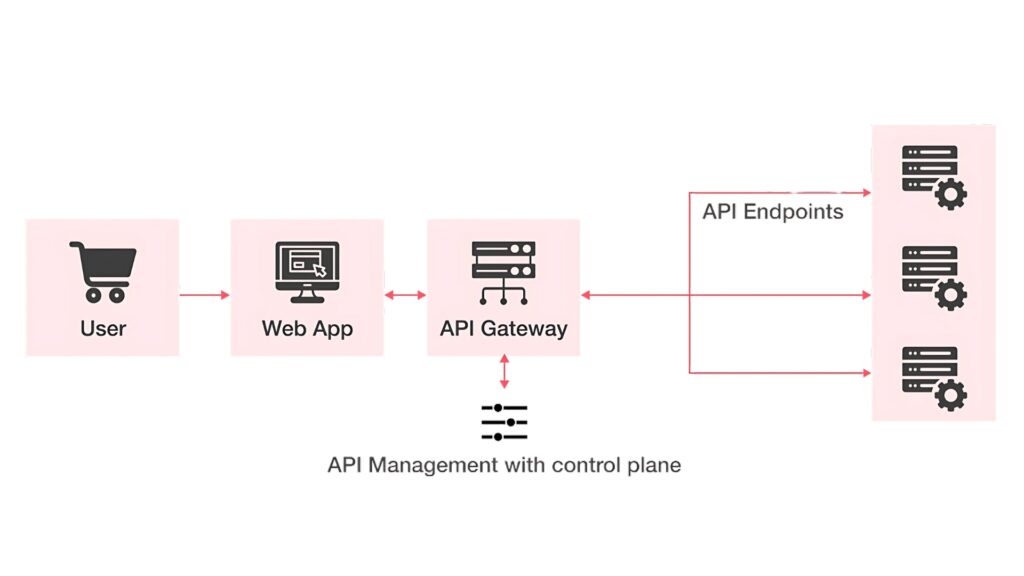React vs Vue vs Angular: Best Front-End Frameworks for Headless Commerce & Performance Optimization


Understanding API-First in Commerce Context
The retail world changed completely in the last decade. Your customers now shop everywhere – Instagram while eating lunch, Alexa while cooking dinner, AR apps in stores, and mobile checkout while walking to their car. Traditional e-commerce platforms crack under this pressure because they weren’t designed for such complexity.
API-first strategy solves this chaos. Instead of building separate systems for each channel, you create one central hub that feeds all touchpoints. Think of it like a restaurant kitchen serving the dining room, drive-through, delivery apps, and catering from the same menu. Your inventory, payments, and customer data become services that any application can access reliably.
What Defines the API-First Approach
Real API-first development means planning how systems communicate before building anything customers see. Teams map out data flows, document security requirements, and establish consistent rules. This upfront work prevents the messy integration problems that cost businesses millions later.
Everything follows identical patterns. Checking inventory works the same way as processing refunds or updating customer profiles. Developers learn one system and understand them all. Security gets built into the foundation rather than patched on afterward, making everything more secure by design.
Core Principles for Business Leaders
Your API architecture creates loose coupling between frontend experiences and backend business logic, enabling rapid deployment across multiple touchpoints. When platforms like TikTok launch commerce APIs or voice assistants add shopping capabilities, your standardized endpoints can integrate through RESTful connections in days rather than months. Microservices architecture allows parallel development workflows where frontend teams consume mock API responses while backend teams build actual data processing services simultaneously.
This API-first strategy ensures your business stays adaptable to emerging technologies. Voice shopping, social commerce, AR try-ons – your flexible foundation adapts to whatever comes next without expensive rebuilds.
Case Study: Netflix’s API-First Transformation
Netflix proves how API-first Strategy transforms entire industries. Moving from DVD rentals to streaming, they didn’t just build a website. They created flexible systems serving any internet-connected device. This choice saved their business when streaming took off on every device imaginable – smart TVs, Xbox, PlayStation, iPhones, Android tablets, you name it.
Today Netflix’s API evolution handles crazy amounts of traffic every single day across hundreds of different gadgets, giving each of their 200+ million users personalized movie picks. They didn’t win because they had the best tech right away. They won because they built something that could change and grow with whatever came next.
API-first commerce changes how your business operates. Development teams work faster, customers get smoother experiences, and you can adapt to new trends without rebuilding everything from scratch.

Development teams can finally work at the same time instead of waiting for each other. Backend specialists build data services while UX designers create interfaces using sample data. Both pieces fit together perfectly because they follow the same blueprint from the start.
This API-first strategy cuts development time dramatically. Product managers can test concepts with real customers earlier, reducing the risk of building unwanted features. Quality improves because each component gets thoroughly tested alone before connecting to everything else.
Black Friday traffic spikes crush traditional systems because everything’s connected. When checkout gets overwhelmed, the entire platform slows down, even parts that don’t need extra power. API-first systems let you boost specific services without wasting money on unused capacity.
Your checkout APIs can scale independently during peak shopping while product browsing stays normal. This targeted approach saves money and delivers better performance. Systems automatically expand during busy periods and contract during quiet hours.
Customers hate inconsistencies. Different prices between mobile and web, disappearing shopping carts, conflicting inventory – these frustrations kill sales. APIs solve this by making every channel pull from identical data sources.
Case Study: Spotify’s Microservices Success
Spotify’s growth to 400+ million users demonstrates API-first strategy . Their microservices architecture separates playlist management, music discovery, and social features into independent services.
During COVID-19 lockdowns and massive streaming increases, Spotify scaled heavily-used features without affecting others. Their recommendation engine runs independently, scaling based on music discovery patterns rather than total platform traffic. This flexibility maintained smooth performance even as usage patterns shifted dramatically.
Modern businesses juggle dozens of functions with unique needs. Product catalogs need speed, payment processing needs security, marketing campaigns need flexibility. One massive system creates compromises that hurt everything.
Separate services let each function optimize for its specific job. Marketing teams update promotional rules without IT deployments. Inventory systems use real-time databases while analytics use reporting-optimized technology. Teams choose the best tools while staying coordinated through standardized connections.
Technical Implementation: Modern systems use Apache Kafka or RabbitMQ for reliable message passing between services. Order completion events automatically trigger inventory updates, shipping notifications, and recommendation engine updates across multiple services simultaneously.
Commerce happens instantly now. Someone buys your last item, and every system needs to know immediately. Event-driven architecture makes this coordination automatic. A completed purchase triggers inventory updates, starts shipping, updates recommendations, and begins follow-up emails simultaneously.
Service Mesh Implementation: Use tools like Istio or Linkerd to handle service-to-service communication, load balancing, and security policies automatically. This creates a dedicated infrastructure layer for microservices communication without changing application code.
Separate your read and write operations for better performance. Order processing uses optimized write databases while product browsing uses read-optimized systems with different data structures. Commands handle state changes while queries serve read requests from denormalized views.
Growing API ecosystems need central coordination for security and performance. Gateways handle common requirements like authentication, monitoring, and rate limiting consistently across all services.
This approach ensures uniform security and provides better visibility into system usage. You can see which features are popular, where bottlenecks occur, and how to optimize based on real patterns rather than guesses.
Commerce systems handle incredibly sensitive data – personal details, payment information, purchase histories. Protection requires multiple defense layers rather than relying on single measures.

Key security elements include:
This layered approach protects against different threat types. Even if one measure fails, others prevent serious breaches.
Managing access across multiple channels requires balancing security with user experience. Customers want convenience while employees need appropriate business access. Modern systems adapt security requirements to access levels needed.
Different user types get different authentication methods. Customers might use biometrics for convenience while administrators require stronger verification for sensitive operations. Permission systems consider context like location and time to make nuanced access decisions.
Global businesses navigate complex regulations like GDPR, CCPA, and PCI-DSS. API-first systems simplify compliance by building required data handling into system architecture from the beginning.
For comprehensive security frameworks, digitalML’s architecture guidelines provide practical approaches for implementing secure, scalable API systems.
Traditional systems hit walls during traffic spikes because they only grow by adding bigger hardware to existing servers. This gets expensive quickly and reaches physical limits. API-first systems grow by adding more servers instead.
Load balancing spreads requests across multiple servers using various strategies. During traffic surges, additional servers automatically start handling increased demand. When traffic normalizes, excess servers shut down to control costs.
Data storage often bottlenecks high-traffic systems. Growing businesses need databases handling more customers, products, and transactions while maintaining speed.
Database sharding spreads data across multiple servers. Customer information is divided by region while product catalogs split by category. This distribution enables parallel processing and reduces individual server loads. Caching stores frequently requested information in high-speed memory, reducing main database queries.
Speed directly impacts sales, making performance optimization a business priority. Content delivery networks cache images and data near customers, reducing loading times globally. API responses get optimized for efficiency, returning only needed information rather than complete records.
Background processing handles time-consuming operations without customer delays. Order processing, inventory updates, and emails happen behind scenes while customers get immediate confirmation.
Phase 1: Strategic Assessment and Planning
Successful transformations start with honest current system evaluation and clear goal definition. This planning determines implementation strategy and sets realistic timeline expectations.
System evaluation catalogs existing applications, databases, and connections. This audit identifies which systems can be enhanced, which need replacement, and which continue operating during transition. Business requirements come from departmental conversations about pain points and desired capabilities.
Phase 2: Core API Development Priorities
API importance varies significantly. Some provide foundational capabilities others depend on, while some support specific use cases. A well-planned API-first strategy ensures early wins while building comprehensive coverage.
Development priorities typically include:
Phase 3: Frontend Integration and Testing
With core APIs operational, frontend development proceeds rapidly across channels. This phase demonstrates API-first business value through better customer experiences.
Web and mobile applications leverage identical APIs ensuring consistent functionality while allowing platform-specific optimization. Testing validates individual API functionality and complete customer experiences through automated suites and load testing under peak conditions.
RBM Software builds API-first commerce systems working smoothly with existing enterprise technology. RBM approach balances innovation with operational continuity through careful integration strategies.
Platform capabilities cover complete commerce operations from catalog management to customer relationships. Each capability follows industry standards for security, data formats, and error handling. Integration expertise connects systems with existing ERP, CRM, and order management applications.
Different organizations need varying support levels based on size, technical capabilities, and objectives. RBM Software offers models aligning with enterprise needs.
Consulting develops API-first strategies and implementation plans through current state assessment and detailed roadmaps. Implementation partnerships provide complete development and deployment while transferring knowledge to internal teams. Managed services handle ongoing platform operation for organizations focusing on business logic.
RBM Software developed expertise across retail, healthcare, manufacturing, and financial services, understanding unique requirements and regulations affecting each industry.
Retail clients launched mobile apps, marketplace integrations, and social commerce capabilities. Healthcare clients maintain HIPAA compliance with modern experiences. Manufacturing clients use APIs for self-service portals and automated ordering.
The shift to API-first architecture represents strategic necessity for businesses competing in digital markets. Organizations delaying this transition risk falling behind competitors moving faster and delivering superior experiences.
Ready organizations should follow structured approaches balancing ambition with practical realities. Transformation requires careful planning, stakeholder alignment, and realistic expectations.
Current assessment and goal definition provide transformation foundations through technology mapping and success criteria connecting technical improvements to business outcomes. Pilot projects identify low-risk opportunities demonstrating value before full-scale commitment.
RBM Software provides expertise, tools, and partnership approaches making transformation successful. Their multi-industry experience ensures organizations find approaches fitting specific needs and constraints.
When you team up with RBM Software, you get methods that actually work, people who’ve been doing this for years, and support that doesn’t disappear after launch. Invest into an API-first strategy and you’ll see real results – your business moves faster, customers have better experiences, and you stay ahead of competitors for the long haul.
Give RBM Software a call today for a free consultation. We’ll show you exactly how API-first architecture can speed up your business growth. While your competitors are still figuring things out, you’ll already be ahead.